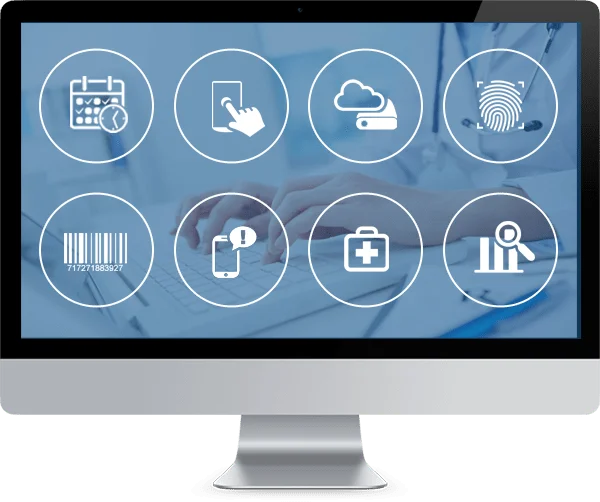5-Step Checklist for Successful Hospital Management Software (HMS) Implementation
April 22, 2021With only 1.6 doctors available per 1000 patients globally, it has become imperative for hospital administrators, operators, and owners to ensure optimal resource allocation throughout the patient lifecycle. This is because one cannot immediately bump the number of doctors graduating yearly or exponentially grow medical equipment at the facility. However, hospital management software can help a clinic, lab, pharmacy, or healthcare facility manage resources more efficiently and deliver healthcare to a larger population.
A hospital management system might seem like a critical solution for solving the problem of limited medical resources. However, as the Standish Group’s data shows, close to 20% of IT projects are termed utter failures. Suboptimal implementation can worsen the issues for a healthcare service-providing institution using the best hospital management software.
Here is a brief and accessible checklist to ensure that your hospital or medical facility can maximize its chances of implementing the hospital management system successfully.
A Checklist for Successful HMS Implementation
If your hospital is considering implementing hospital management software (HMS), here is a checklist you can start working with:
1. Conduct Need Analysis Throughout the Patient Lifecycle
A hospital management software can have several modules and features. Some of these include appointment & scheduling, laboratory & pharmacy management, payroll, HR, accounts management, outpatient management, etc. While investing in comprehensive HMS software can help you grow faster as a healthcare practice, it can also increase overheads in the form of features or modules you may not need.
Begin the process by conducting a thorough need analysis throughout the patient lifecycle. Examine each stage, starting from when the patient first contacts you to the final phase when they are discharged from your facility. Evaluate the inefficiencies in the administrative, operational, and management processes at each point. Based on this, decide the features you must have in your HMS software.
2. Onsite vs. Cloud Platforms
If you have worked with legacy ERP systems, you know the material impact of onsite hosting. Generally, it has been perceived that onsite software systems are more secure. While this assertion was valid not long ago, it is now overly generalized. Today, cloud platforms encrypt and secure patient data during storage and transmission.
Beyond the security perspective, the cloud has the added advantage of the service provider bearing the liability of maintenance and uptime. Imagine having a legacy onsite system that stops functioning one fine day because the internal system cannot take the load. Cloud platforms are optimized for unpredictable surges in user traffic and, hence, have relatively higher probabilities of better uptime. Use this analysis when comparing onsite systems and cloud-based hospital management software.
Continue Read: Cloud-Based vs On-Premise Hospital Software
3. Minimize Costs by Opting for a Free or Limited Trial
If you are about to jump into the pond, it is worth dipping your toe in it to understand the depth. The same adage must be applied to investing in your Hospital software.
Human decision-making has evolved around the Bayesian idea of probabilities. The more accurate data we have, the more precise probabilities we can calculate. The entire decision to evaluate a hospital management system is eventually a probabilistic exercise in which you try to determine whether the platform will be ideal for your medical practice.
Thus, your healthcare management platform must come with a free or limited trial. Ensure you fully experience it once and get active feedback from the employees who will use it daily. If this seems to simplify their jobs, you can consider it a worthy investment.
4. Comprehensive Solutions Would Not Need Frequent Updates
You must evaluate the prospective hospital management platform from two critical angles: how many updates will it require, and how much will each update cost you? Even if there are no direct costs of updates, there are actual costs for your facility.
With each update, your system experiences downtime that must be accounted for. Moreover, if the update puts your data at risk or has to be rolled back, it will further inconvenience your team. Unnecessary updates might even slow the system down and hamper your productivity.
Thus, the simplest way to understand the risk of updates is to look at how comprehensive the platform is. If it is already loaded with features and functionalities, most of the updates will be around security and bug fixing. You can afford to have such updates as they do not hinder your practice’s productivity. But if you opt for ‘l’light’MS software, practices will get updated with more features later, and you might have to consider the risks associated with each update.
5. Go Beyond the Price and Perform a Cost-Benefit Analysis
As a hospital administrator or owner of a healthcare practice, the most superficial analysis you can perform is to examine the platform’s price. However, just because it is the most superficial analysis does not mean it reflects reality.
Here is an analogy to simplify the decision: Private jets are expensive and unnecessary for most people around the world. Yet, they start adding value for management teams after a certain point. If your leadership has to visit multiple locations and the cost of losing time is much more than the expense of hiring a private jet, you will naturally gravitate towards hiring a private jet. Thus, the solution might seem extremely expensive if you completely ignore the benefits.
The most objective way to perform this analysis is by working with the hospital management software team to understand each feature & functionality in granular detail. Then, understand the impact of these features on your everyday operations. This will give you an idea of what kind of value the system delivers to your practice through resource optimization, increased productivity, and enhanced patient experience. Once you have evaluated the full scope of benefits, you will be well-positioned to examine the price.
In Conclusion
Whether you run a relatively more minor practice or are in the administrative team at a major healthcare institution, the decision to invest in hospital management software is complex. It requires a thorough analysis of several factors. While you can perform your research in great detail, using this checklist will mitigate the risk of ignoring some key factors.
Contact the SoftClinic team and streamline your healthcare facility administration, operations, and backend with an integrated, tested, and cost-effective platform. Click here for a free demo.

